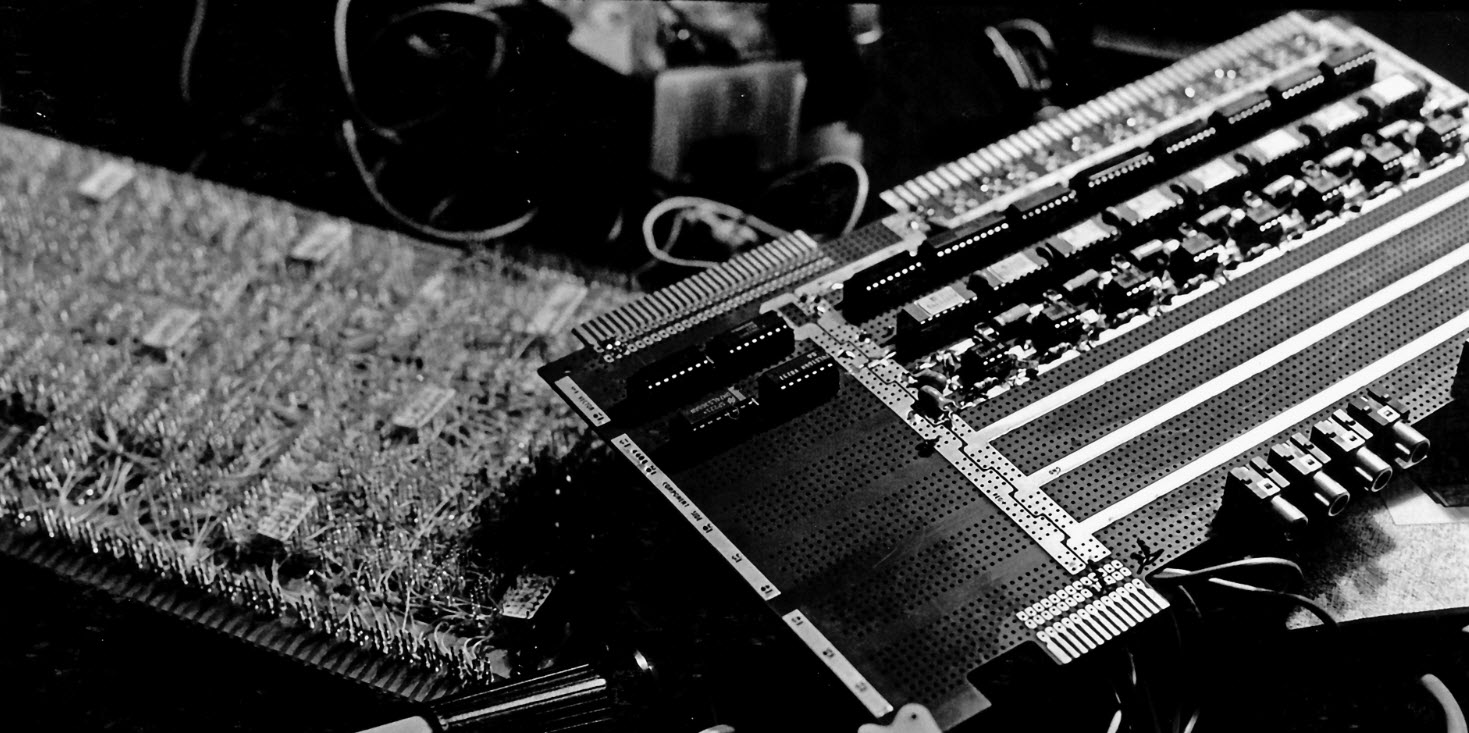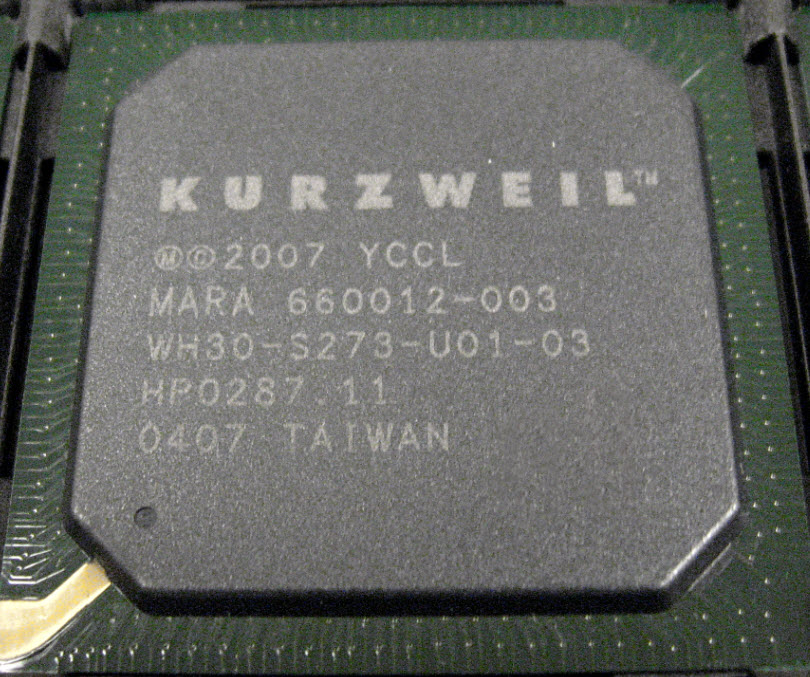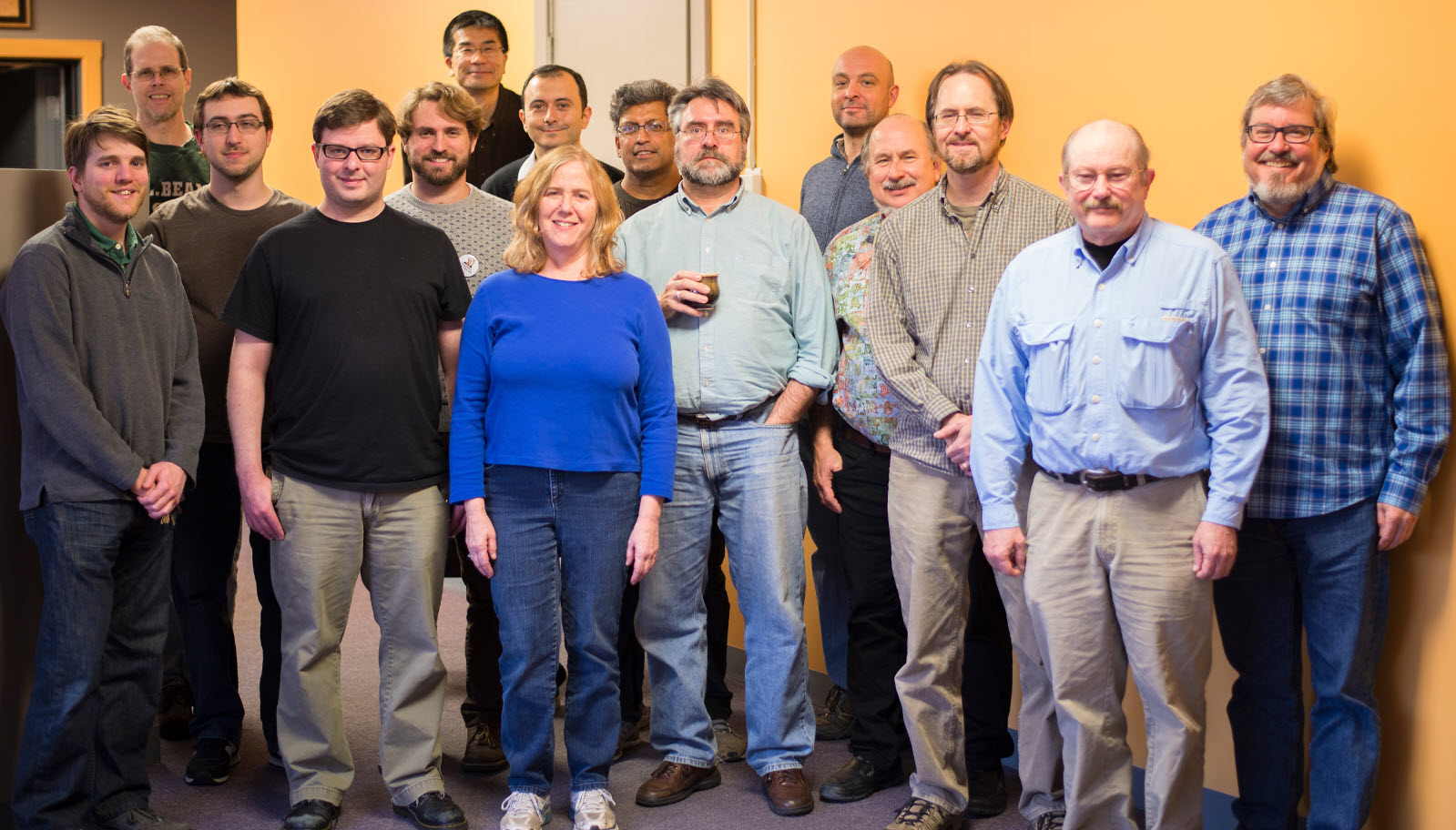Ray Kurzweil music technology breakthroughs – inside story
February 8, 2015 by Amara D. Angelica

Kurzweil 250 prototype boards (credit: Tim Thompson/Kurzweil Music Systems/Young Chang)
In Fall 1983, visitors crammed into a packed demo on the fifth floor of the New York Hilton Hotel during the New York AES convention and marveled at the Kurzweil K250, noted Electronic Musician magazine in its March 2015 issue.
“The first ROM-based sampling keyboard to successfully reproduce the full complexity of acoustic instruments, the 250 offered natural-sounding pianos, thick drums, lush strings, and more, and its 88-note, velocity-sensitive wooden keyboard provided a piano-like playing experience,” EM said.
“The K250 was a perfect component for studios and musicians looking for a realistic grand piano sound, and didn’t have the space — or budget — to allow it. Everybody who heard the Kurzweil K250 wanted one.”
Grand challenges
But the engineering had involved overcoming major challenges. “Due to the multiple strings for each note that are slightly out of tune with each other, the overtones of the piano are not perfect multiples of the fundamental frequency,” Ray Kurzweil explains. “They are ‘inharmonic,’ which gives the piano its unique rich character of sound.
“Traditional samplers at the time would loop the last waveform during the decay phase of the sound and this turned the piano sound into what sounded like an organ. We developed a unique way to retain the inharmonicity of the partials throughout the evolution of each note. We were able to model the effect of key pressure on timbre, and to capture many other complexities.”
That jaw-dropping realism of the K250 evolved over the following 32 years into Kurzweil Music Systems‘ K150, K1000, K2000 (my first synth), K2500, K2600, PC88, and the SP, PC2, and PC3 series of synthesizers, along with advanced stage pianos like the Ardis (I got a great demo at NAMM last year — it’s like an entire band in there, but one that can be changed instantly from, say, jazz to salsa).
Small wonder that over that time, virtually every major synthesizer keyboard artist from Pink Floyd to Billy Joel, Elton John, and Paul McCartney has used Kurzweil synthesizers in their performances (see videos on our Ray Kurzweil receives 2015 Technical Grammy Award for achievement in music technology post).

Three custom-designed MARA digital signal processing chips provide the real-time, high-speed processing for sounds, polyphony, and effects to achieve Forte’s ultra-realistic sound. MARA chips are also used in all other current Kurzweil Music products. (Credit: Tim Thompson/Kurzweil Music Systems/Young Chang)
Chip innovations
One key to Ray Kurzweil’s music-technology success has been his Steve Jobs-like ability to assemble a stellar team of sound, electronics, and computer experts, such as legendary inventors Robert Moog, physicist Bob Chidlaw, and electrical engineer/programmer Hal Chamberlin, whose landmark 1981 The Musical Applications of Microprocessors book was a key reference for the music-technology industry.
Over the 32 years, the Kurzweil Music team has introduced innovations such as ASICs (application specific integrated circuits) and DSP (digital signal processing) chips, which operate many times faster and at higher quality than conventional chips.
Forte non largo
Last year, Kurzweil Music made history again.
Bucking the conventional use of computer software to generate synthesizer sounds in sample loops, the company introduced a new technology called Flash-play. It runs on the new Forte stage piano, which “currently outclasses, by a comfortable margin, any hardware pro keyboard instrument on the market,” says Keyboard magazine.
Flash-play achieves super-realistic live sounds with zero-loading time by using 16 GB of ROM (read-only memory) to store complete recorded sounds — from the beginning of a note until it decays into silence — while providing extreme dynamic range (soft to loud) and multiple voicing.
I love my Kurzweil PC3X synth, but after hearing the demos on the Kurzweil Tutorials, I’m jonesing to upgrade to the awesome Forte.
Kurzweil Tutorials | Hannah Holbrook (SHEL) performs “Tango on a Tightrope” on the new Kurzweil Forte Stage Piano (Program #6 Solo 7ft Grand).

Kurzweil’s brain: the engineers at Kurzweil Music (credit: Tim Thompson/Kurzweil Music Systems/Young Chang)